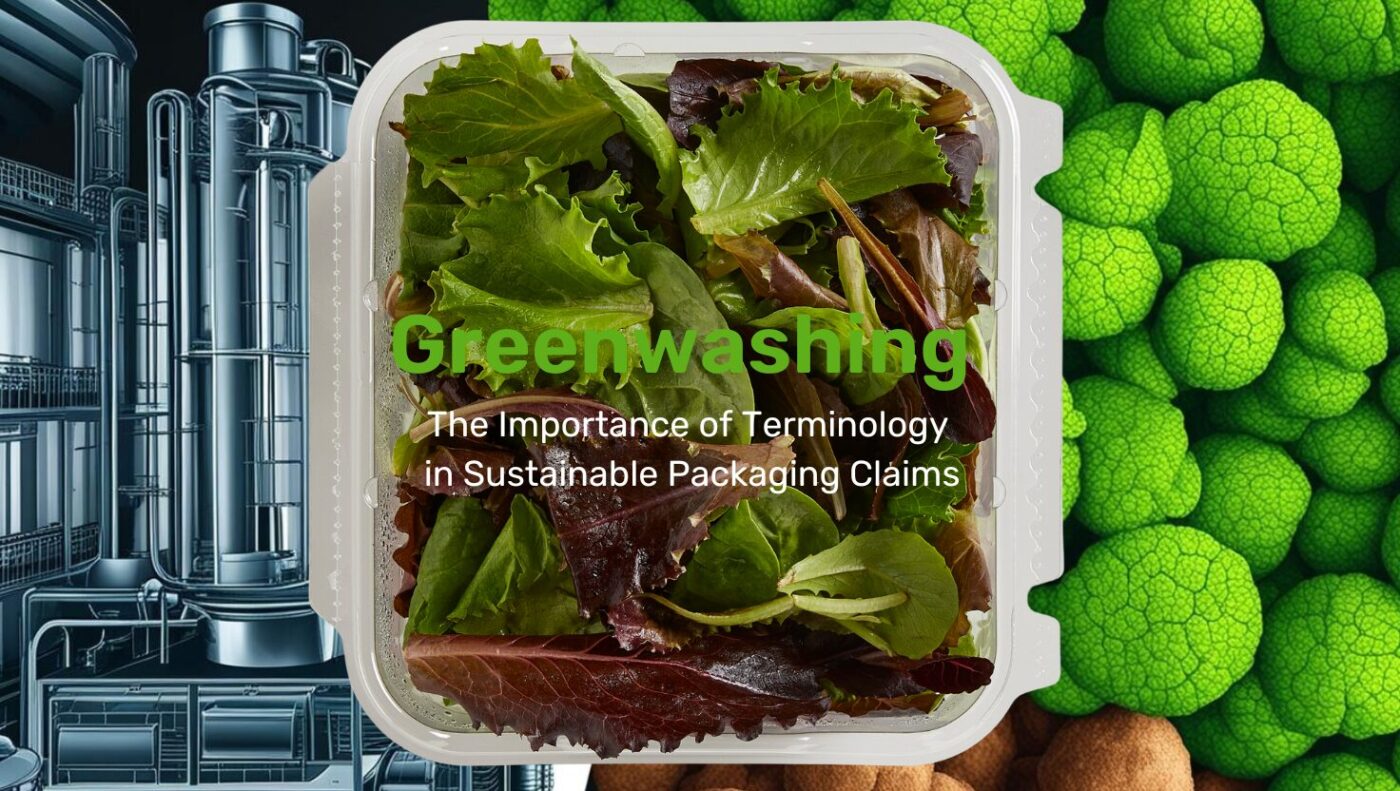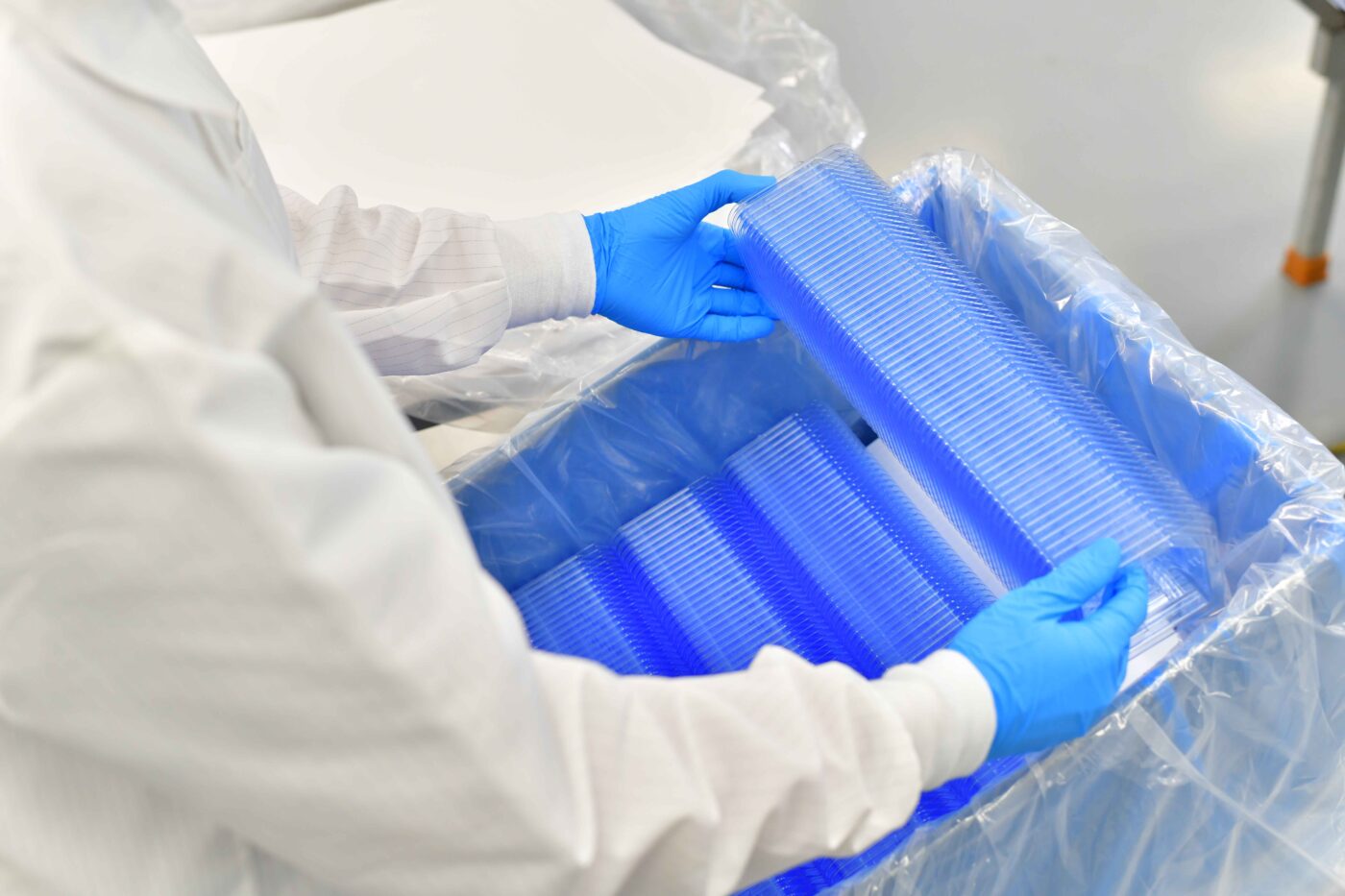
Understanding the Language of Sustainability As the push for sustainable packaging grows,…


When utilizing PETG for packaging, a denest strategy is needed to aid in the separation of PETG trays that are stacked together. PETG is an outstanding material for medical packaging; however, without careful consideration a stack of PETG parts can become difficult to separate. There are several ways to address the issue of part denesting, some are material driven and others are structural within the design of the package. This post explains the various methods available to packaging engineers for addressing denesting issues in PETG Packaging.
There are three primary material technologies to improve the denest function in PETG:
1. Silicone Coating
2. Anti-Block
3. Slip Agents
Silicone coating is one of the most commonly used technologies in the packaging industry to address PETG part denesting; however, this is not the case in medical device packaging. It is estimated that 30- 40% of medical device packaging used in the U.S. utilizes silicone, while only around 10-20% of those in Europe use silicone.
Traditional methods of applying silicone have inherent limitations, most notably controlling the consistency of the silicone level. Additionally, qualitative analysis tools to measure the silicone have been lacking. In traditional application methods, a liquid silicone emulsion is applied to the surface of the PETG sheet during the extrusion process. The sheet enters a batch of the emulsion and excess silicone is wiped away with a squeegee like device. The sheet is then thermoformed into a tray and the silicone remains intact on the treated surface. The lack of consistency in silicone amount can lead to variations in how trays nest together and pull apart. This can be a frustration that leads to exploring other methods of denesting.
Plastic Ingenuity created a proprietary technology to improve the application of silicone and a method to quantify the amount of silicone applied in process to address the limitations of traditional methods. Plastic Ingenuity’s application method includes a rotogravure roll that applies the silicone to the sheet by direct contact. This results in more consistent silicone levels across the entire width of the sheet.
The silicone level is measured at various locations in the sheet by a proprietary x-ray measurement technology. Specification levels can be derived which correlate from light to heavy levels of silicone. The application technology combined with the qualitative method of control results in industry leading silicone application consistency.
| Application | Consistency | QC Method | Specs | |
| Plastic Ingenuity | Rotogravure | High | X-Ray | Defined |
| Industry | Bath | Low | Tape Test | Not Defined |
In most medical applications that utilize silicone, it is only applied to one side of the sheet and that is to the non-product side of the sheet/part. Even though silicone is only applied to the one side of the sheet, silicone can transfer to the product side of the sheet during stacking or rolled sheet with treat side contacting product sheet side. For some applications, this silicone transfer can contact the device or present an issue when heat sealing lid stock to the thermoformed trays.
Silicone may not be the best choice for device manufacturers concerned with bio-compatibility issues and the impact the silicone might have on their device. Bio-compatibility should be tested by the device manufacturer if concerns exist. All silicone is FDA approved and it is used in many implantable device packaging applications.
Anti-block is an excellent technology to leverage when silicone is not feasible. The anti-block is an additive that is blended with the PETG resin during the extrusion of roll stock. It is an encapsulated “In-organic” material that does not leach out or migrate to the surface. The anti-block changes the coefficient of friction on the surface of the part. The surface of a sheet of PETG when viewed under a microscope is very smooth.
This smooth surface is what creates the “sticky” nature of PETG. HIPS, on the other hand, under a microscope has small bumps or ridges. These ridges provide space between HIPS parts, thus not allowing them to nest tightly together. The anti-block additive changes the surface of the PETG by creating small, microscopic ridges. Some clarity is sacrificed but the haze is almost undetectable once the device is placed within the package. Anti-block is an excellent option for customers who do not want silicone or a slip agent to bloom to the surface since no blooming occurs.
Another technology to enhance denest is adding a small percentage of anti-block and small percentage of slip agent to the roll stock. This type of denest technology is the most used in the medical packaging industry. The anti-block functions as it was described above however less haze results since it is used in a lower percentage when combined with a slip agent. The slip agent functions like silicone, however it is not silicone. The slip agent is an organic product that is blended into the sheet during extrusion and then blooms to the surface of the tray following the thermoforming process.
This blooming effect aids in the denesting of parts by decreasing the coefficient of friction. The slip agent has the potential of detaching from the tray and onto the device. Most polymer additive producers will not define the blend of their product because of the proprietary nature of the blend. These blends however are FDA approved and have passed toxicity and biocompatibility testing.
Regardless of the method of denest chosen, consideration needs to be taken during the design process for locating denest formed features into the medical device tray. Stacking lugs provide a mechanical interference from one cavity to another when stacked, thus preventing the trays from locking together. In cases when lugs are not feasible, reverse geometry features are used to create the mechanical interference using specialized tooling features. Lugs are preferred to reverses as they are easier to strip from the thermoform tool, form better, and are less likely to lock together if the part is compressed.
